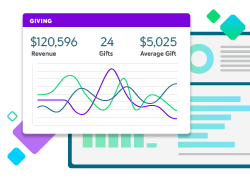Not Just Buildings: Today’s Dynamic Capital Campaign Models

What does the term “capital campaign” evoke for you?
Has your organization conducted one before? Have you witnessed or even been a part of other organizations’ campaigns in your community?
Everyone has some ideas about what a capital campaign is—how it’s structured, what it accomplishes, how long it should take, who it should involve, and more. Organizations, seasoned fundraisers, and campaign consultants naturally bring these preconceived notions to the table, shaping the campaigns they join in all kinds of ways from start to finish.
But capital campaigns are big, complex undertakings, likely the biggest and most complex you’ll experience.
This is why we believe being locked into just one way of approaching them can hold you back. When you invest so much time and energy into taking your mission to the next level, the campaign must be tailored to your unique needs and goals to generate meaningful returns.
Capital Campaign Models: 4 Categories
Many nonprofits think of capital campaigns as major initiatives only used to fund the construction of new buildings. While this is often true, there are other, more flexible use cases for the capital campaign model.
They can be generally broken down into four categories:
Capital Campaigns
This is what many consider a classic or typical campaign—one lasting several years and raising a substantial fundraising goal to fund a large, physical project that will enable the nonprofit to grow its impact.
These are highly targeted campaigns, with their fundraising goals tightly tied to the specific project or set of campaign projects. They closely adhere to the classic phase structure, with planning phases, a feasibility study, a long quiet phase to secure the bulk of the goal, a public kickoff, a short public phase, and extended post-campaign stewardship.
Traditional capital campaigns often fund building projects and other types of major expansions or one-time investments. But remember that flexibility is key—other objectives can be included, as well.
Mini-Campaigns
Take the core capital campaign model and its focused approach, and shrink it down. Mini-campaigns have smaller goals and shorter timeframes, and they can be used by nonprofits to raise funds for any capacity-building project.
They proved particularly helpful for organizations facing crises at the height of the COVID pandemic; we saw some nonprofits raise over $100,000 in 8 weeks.
With the condensed strategy of a mini-campaign, there’s a heightened focus on fundraising efficiency. The bulk of your energy will go towards quiet phase fundraising strategies and soliciting major donors. The kickoff and public phases may be reduced or eliminated depending on the nature of the campaign’s objectives.
As with all types of capital campaign fundraising, these mini-campaigns must have a crystal-clear case for support. But because they are short and intense, they require you to identify and engage only a handful of your most impactful supporters.
Capacity Campaigns
This type of capital campaign follows the standard model but raises funds for a bundle of non-building capacity investments rather than a construction project or a single large investment.
The objectives of a capacity campaign can include items like:
- Evaluation, planning, and other professional services
- Hiring and training staff
- Investments in your operational or fundraising infrastructure
- Investments in new equipment and technology
- Start-up funds for new programs
- Communications investments
These types of objectives can be just as important for your organization over the long run as a major ribbon-cutting construction project. Capacity campaigns are useful because they allow you to strategically and intentionally pursue these objectives instead of struggling to include them in your annual budget one at a time, year after year.
Remember that as in a building campaign, clear messaging and laying out compelling reasons why these investments are important will be essential for success.
Comprehensive Campaigns
These are capital campaigns that set much broader fundraising goals. Although they also include specific, large capacity investments or expansion projects, their goals typically encompass all of the incoming funding over a specified period until the total goal is reached.
This creates a sweeping, organization-wide push to increase fundraising and growth in multiple areas—the capital investment project, endowment, annual fund, planned gifts, and more.
These can be useful for larger organizations to show supporters and funders how all incoming support works together as a whole to grow your impact and sustain the mission.
The Nonprofit CRM Built for Fundraisers
Find out how Blackbaud’s Raiser’s Edge NXT® fits your organization.

Taking a Flexible Approach
There can be quite a bit of overlap between these four campaign models.
A traditional capital campaign, for instance, can include a set of smaller capacity investments alongside its primary building objective. A capacity campaign might include a special fundraising challenge aimed at securing new planned gifts.
When it’s time to ratchet up your nonprofit’s impact, you should feel free to design the campaign that you need.
The categories described above simply illustrate the general shapes that campaigns can take. The key takeaway is that you can design a campaign that fits your organization’s situation while following the guidelines of campaign thinking and adapting the best practices of capital campaign fundraising.
When you can clearly articulate your goals and needs, turn them into a compelling story, think from abundance while being realistic about your limitations, and foster a spirit of flexibility and excitement, you can develop the right approach for your organization.




